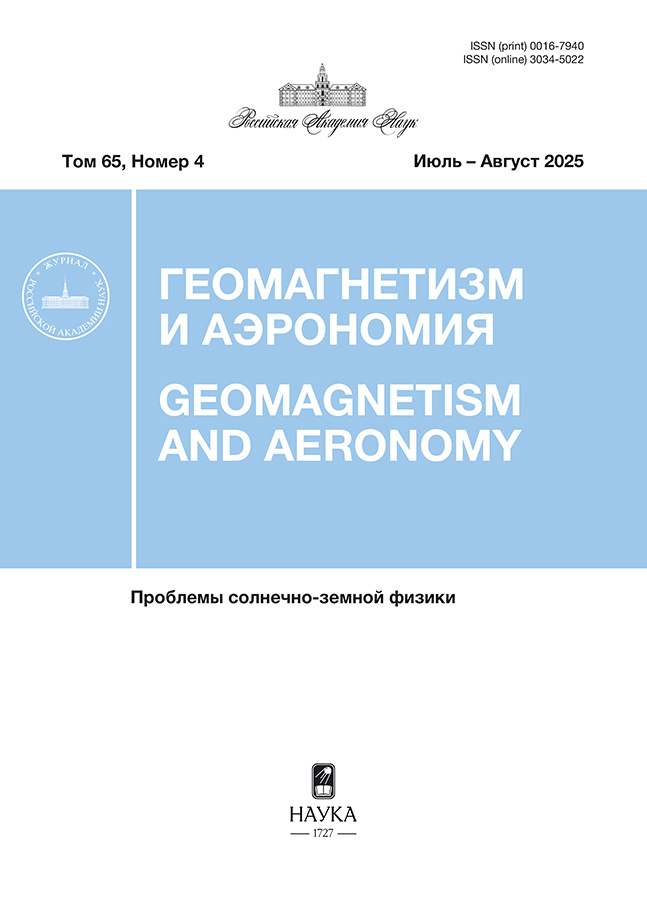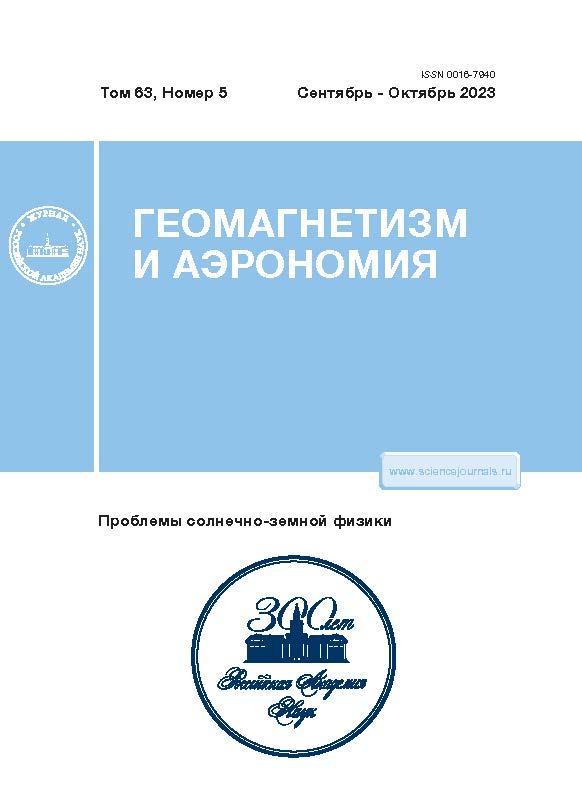The Flare Emission of the May 4, 2022 Event and Its Millimeter Component
- Authors: Smirnova V.V.1, Tsap Y.T.1, Ryzhov V.S.2, Motorina G.G.3,4,5, Morgachev A.S.5, Bárta M.3
-
Affiliations:
- Crimean Astrophysical Observatory, Russian Academy of Sciences
- Bauman Moscow State Technological University
- Astronomical Institute of the Czech Academy of Sciences
- Ioffe Institute
- Central Astronomical Observatory at Pulkovo of Russian Academy of Sciences
- Issue: Vol 63, No 5 (2023)
- Pages: 561-569
- Section: Articles
- URL: https://ruspoj.com/0016-7940/article/view/650982
- DOI: https://doi.org/10.31857/S001679402360028X
- EDN: https://elibrary.ru/ZVMSYI
- ID: 650982
Cite item
Abstract
Based on observations at the RT-7.5 radio telescope of the Bauman Moscow State Technical University
at a wavelength of 3.2 mm (93 GHz), along with other ground-based and space instruments (Siberian
radioheliograph, Solar Dynamics Observatory (SDO), Metsähovi radio observatory), the origin of millimeter
radiation from a solar flare was investigated for the SOL2022-05-04T08:45 X-ray class M 5.7 flare. An
analysis of the time profiles of radiation in the X-ray and centimeter ranges showed that the millimeter emission
source is not associated with hot (5 × 105–107 K) coronal plasma. This is also evidenced by the estimate
of the sub-THz flux of radiating hot plasma according to the AIA/SDO data, which turned out to be much
less than the observed values. Indications were obtained of the development of thermal instability in flare
ultraviolet loops. The relationship between the millimeter emission of the flare and the heat source in the
solar chromosphere has been substantiated.
About the authors
V. V. Smirnova
Crimean Astrophysical Observatory, Russian Academy of Sciences
Email: vvsvid.smirnova@yandex.ru
Nauchny, Russia
Yu. T. Tsap
Crimean Astrophysical Observatory, Russian Academy of Sciences
Email: vvsvid.smirnova@yandex.ru
Nauchny, Russia
V. S. Ryzhov
Bauman Moscow State Technological University
Email: vvsvid.smirnova@yandex.ru
Moscow, Russia
G. G. Motorina
Astronomical Institute of the Czech Academy of Sciences; Ioffe Institute; Central Astronomical Observatory at Pulkovo of Russian Academy of Sciences
Email: vvsvid.smirnova@yandex.ru
Ondřejov, 251 65 Czech Republic; Polytekhnicheskaya, 26, St. Petersburg, 194021 Russia; St. Petersburg, 196140 Russia
A. S. Morgachev
Central Astronomical Observatory at Pulkovo of Russian Academy of Sciences
Email: vvsvid.smirnova@yandex.ru
St. Petersburg, 196140 Russia
M. Bárta
Astronomical Institute of the Czech Academy of Sciences
Author for correspondence.
Email: vvsvid.smirnova@yandex.ru
Ondřejov, 251 65 Czech Republic
References
- – Алтынцев А.Т., Лесовой С.В., Глоба М.В. и др. Многоволновый сибирский радиогелиограф // Солнечно-земная физика. Т. 6. № 2. С. 37. 2020.
- – Смирнова В.В., Цап Ю.Т., Шумов А.В. и др. Анализ механизмов генерации излучения рентгеновского, микроволнового и миллиметрового диапазонов в плазме солнечной вспышки 5 июля 2012 г. // Наука и образование: науч. изд-е МГТУ им. Н. Э. Баумана. № 12. С. 85–97. 2016.
- – Benz A.O., Monstein C., Meyer H., Manoharan P.K., Ramesh R., Altyntsev A., Lara A., Paez J., Cho K.-S. A World-Wide Net of Solar Radio Spectrometers: e-CALLISTO // Earth, Moon, and Planets. V. 104. P. 277–285. 2009.
- – Dulk G.A. Radio emission from the sun and stars // Annual Rev. Astron. Astrophys. V. 23. P. 169–224. 1985.
- – Field G.B. Thermal instability // ApJ. V. 142. P. 531–567. 1965.
- – Cliver E.W., Gentile L.C., Wells G.D. RSTN (Radio Solar Telescope Network) observations of the 16 February 1984 cosmic-ray flare // United States: N. p. 1987.
- – Hannah I.G., Kontar E.P. Differential emission measures from the regularized inversion of Hi-node and SDO data // A&A. V. 539. Id. A146. P. 14. 2012.
- – Kontar E.P., Motorina G.G., Jeffrey N.L.S. et al. Frequency rising sub-THz emission from solar flare ribbons // Astron. Astrophys. V. 620. Id. A95. P. 6. 2018.
- – Lemen J.R., Title A.M., Akin D.J. The Atmospheric Imaging Assembly (AIA) on the Solar Dynamics Observatory (SDO) // Sol. Phys. V. 275. I. 1–2. P. 17–40. 2012.
- – Lysenko A.L., Ulanov M.V., Kuznetsov A.A., Fleishman G.D., Frederiks D.D., Kashapova L.K., Sokolova Z.Ya., Svinkin D.S., Tsvetkova A.E. KW-Sun: The Konus-Wind Solar Flare Database in Hard X-ray and Soft Gamma-ray Ranges // Ap. J. Suppl. Series. V. 262. P. 32–39. 2022.
- – Menzel W.P., Purdom J.F.W. Introducing GOES-I: The first of a Generation of new Geostationary Operational Environmental Satellites // Bulletin of the American Meteorological Society. V. 75. № 5. P. 757–781. 1994.
- – Morgachev A.S., Tsap Yu.T., Smirnova V.V., Motorina G.G. Simulation of Subterahertz Emission from the April 2, 2017 Solar Flare Based on the Multiwavelength Observations // Ge&Ae. V. 58. I. 8. P. 1113–1122. 2018.
- – Skokić I., Benz A.O., Brajša R. et al. Flares detected in ALMA single-dish images of the Sun // As-tron. Astrophys. V. 669. Id. A156. P. 11. 2023.
- – Smirnova V.V., Tsap Yu.T., Morgachev A.S., Motorina G.G., Bárta M. The Origin of Time Delays between Sub-Terahertz and Soft X-ray Emission from Solar Flares // Ge&Ae. V. 61. Iss. 7. P. 993–1000. 2021.
- – Trottet G., Raulin J.-P., Kaufmann P. et al. First detection of the impulsive and extended phases of a solar radio burst above 200 GHz // Astron. Astrophys. V. 381. P. 694–702. 2002.
- – Tsap Yu.T., Smirnova V.V., Morgachev A.S. et al. On the origin of 140 GHz emission from the 4 July 2012 solar flare // Adv. Space. Res. V. 57. I. 7. P. 1449–1455. 2016.
- – Tsap Yu.T., Smirnova V.V., Morgachev A.S. et al. Millimeter and X-Ray Emission from the 5 July 2012 Solar Flare // Sol. Phys. V. 293. I. 3. Id. 50. 2018.
- – Urpo S. Observing methods for the millimeter wave radio telescope at the Metsähovi Radio Research Station and observations of the Sun and extragalactic sources // PhD thesis. Helsinki University of Technology, Espoo, Finland. 1982.
- – Wedemeyer S., Bastian T., Brajša R. et al. Solar Science with the Atacama Large Millime-ter/Submillimeter Array—A New View of Our Sun // Space Sci. Rev. V. 200. I. 1–4. P. 1–73. 2016.
Supplementary files


















